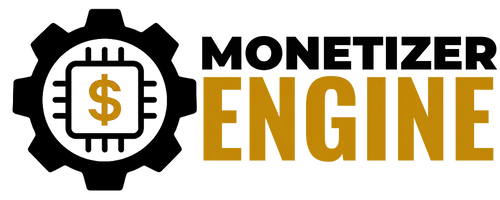
AI Funnel Forecasting: Predict Revenue and Optimize Before Launch
What if you could predict the performance of your next marketing campaign before spending a dollar on ads?
That’s exactly what AI funnel forecasting delivers—a data-driven, predictive approach that lets you simulate outcomes, identify bottlenecks, and optimize your entire funnel before launch. Instead of relying on guesswork, you can now forecast conversions, test audience behavior, and fine-tune your strategy based on real data insights.
At MonetizerEngine, we call this the evolution of performance marketing—smart funnels that learn before they launch.
In this article, we’ll explore how AI funnel forecasting reshapes the way marketers design, test, and scale campaigns for maximum impact.
Understanding Predictive Funnel Analytics
At its core, predictive funnel analytics combines machine learning and data modeling to estimate how leads will move through your marketing funnel. By analyzing thousands of historical data points—from CRM entries to engagement metrics—AI models uncover trends, patterns, and probabilities that humans would easily miss.
The result? Marketers gain a predictive map of conversion paths, allowing them to anticipate where prospects will drop off and how to intervene before it happens.
How Predictive Funnel Analytics Works
Data Gathering: AI systems collect information from multiple sources—your CRM, ad platforms, past campaign results, and behavioral analytics.
Model Training: Machine learning identifies historical success patterns and failure triggers.
Simulation: The system models how new users will likely behave within your funnel.
Optimization: It flags weak points (like low engagement or poor conversion rates) so you can fix them pre-launch.
Instead of waiting for campaigns to fail and analyzing them afterward, predictive analytics lets you forecast outcomes—and prevent underperformance from the start.
The Power of Conversion Forecasting
Traditional campaign planning often relies on projections rooted in optimism, not evidence.
Conversion forecasting powered by AI changes that by creating models based on actual performance variables—cost per click, engagement rates, conversion lag, and customer lifetime value.
These forecasts act as financial blueprints for your funnel, revealing:
Expected conversion rates for each stage
Budget thresholds where ROI peaks or declines
The most profitable audience segments
Predicted bottlenecks in user flow
For example, a software brand might forecast that a specific ad creative converts 18% better among tech-savvy SMB owners but falls flat among enterprise prospects. This insight enables them to allocate spend strategically, boosting conversions and reducing waste.
When you know the likely outcome in advance, every decision becomes smarter—and every dollar more productive.
AI Campaign Modeling: Simulating Success Before Launch
One of the most transformative aspects of AI funnel forecasting is AI campaign modeling—the ability to test multiple “what-if” scenarios before running a single ad.
AI models can simulate different audience targets, budgets, creative strategies, and even landing page variations to predict which combination will yield the best results. It’s like having a laboratory for your marketing ideas—minus the real-world cost.
The Modeling Workflow
Define Objectives: Establish measurable goals—like CPL, ROAS, or conversion volume.
Develop Scenarios: Create models for different ad sets, funnels, and targeting variations.
Run Simulations: The AI “plays out” each campaign virtually using predictive datasets.
Compare and Optimize: Choose the model with the highest projected ROI.
This approach allows teams to optimize creative direction, audience selection, and messaging long before launch. It turns marketing strategy from reactive to predictive engineering—precisely the kind of thinking that separates thriving brands from stagnant ones.
Enhancing Forecast Accuracy with Real-Time Data
Forecasting isn’t just about looking backward—it’s also about adapting in real time.
Modern AI systems integrate live data streams from ads, social listening, web analytics, and CRM performance to adjust forecasts dynamically. This creates a feedback loop where insights evolve as the market does.
Key Techniques for Real-Time Optimization
Sentiment Analysis: Natural language processing (NLP) tools track audience reactions across social platforms to gauge mood and message resonance.
Anomaly Detection: AI identifies unusual dips or spikes in campaign performance, alerting marketers to act immediately.
Dynamic Adjustments: Predictive models recalibrate forecasts automatically when external conditions change—like cost-per-click inflation or algorithm updates.
Imagine you’re running a holiday funnel and notice sentiment around your product shifts due to a trending competitor campaign. Real-time AI adjustments could help you pivot messaging instantly, preserving your conversion rate.
That’s forecasting in motion—not static reports, but living intelligence.
How Predictive AI Changes Funnel Strategy
The old funnel optimization model was linear: launch → analyze → adjust → relaunch.
With AI forecasting, it becomes circular—predict → simulate → launch → refine → predict again.
This cycle makes your funnel self-learning, continuously improving from every dataset it touches.
Strategic Benefits
Risk Reduction: Spot weak spots and performance risks before investing heavily.
Faster Launches: Use simulations to skip prolonged testing cycles.
Higher ROI: Optimize ad spend allocation with accuracy-driven projections.
Scalable Learning: The system gets smarter with every campaign iteration.
Marketers no longer have to rely on postmortems. Instead, they’re equipped with predictive pre-mortems that prevent underperformance before it begins.
Implementing AI Funnel Forecasting in Your Workflow
While the concept may sound complex, implementation can follow a clear structure:
Centralize Your Data: Integrate your CRM, ad analytics, and website metrics into one hub.
Deploy Predictive Models: Use AI tools that align with your funnel goals (e.g., lead gen, eCommerce, SaaS conversions).
Simulate Campaign Scenarios: Run multiple “what-if” forecasts using varied inputs like budget, audience, or ad creative.
Validate Predictions Post-Launch: Compare real results to forecasts to fine-tune model accuracy.
Automate Iteration: Feed new performance data back into the AI for continuous optimization.
By merging automation with strategic insight, your funnels begin to function like living systems—adapting and optimizing themselves over time.
A New Era of Marketing Intelligence
AI funnel forecasting doesn’t replace marketers—it enhances them.
It frees teams from reactive data analysis and allows them to focus on creativity, positioning, and human connection—the elements that machines can’t replicate.
At MonetizerEngine, we see AI as a partner, not a replacement. It’s there to handle the complexity of data interpretation so your team can focus on building smarter campaigns with confidence.
The future isn’t about chasing numbers—it’s about predicting them.
Download: “The AI Funnel Forecasting Playbook”
Discover how to predict conversions, test campaigns, and optimize funnels before launch.
This free MonetizerEngine guide walks you through the exact framework top marketers use to merge AI forecasting with conversion optimization.
Inside you’ll learn:
How to simulate user behavior and test campaigns virtually
The metrics that matter most in predictive funnel analytics
Tools for dynamic forecasting and campaign modeling
A pre-launch optimization checklist
Download the Free AI Funnel Forecasting Playbook Now
AI-powered marketing doesn’t just automate—it anticipates.
If you’re ready to use AI to predict your revenue and optimize before launch, MonetizerEngine can help.
Our automation systems combine predictive analytics, funnel simulations, and CRM intelligence to help you forecast, test, and scale campaigns that perform.
Start your next campaign smarter at MonetizerEngine.com
FAQs
1. What is AI funnel forecasting?
AI funnel forecasting uses predictive analytics and machine learning to estimate how leads will move through your marketing funnel before you launch your campaign.
2. How does predictive funnel analytics improve conversion rates?
By identifying drop-off points and bottlenecks early, predictive analytics allows marketers to adjust content, targeting, or offers before spending ad budget.
3. What is AI campaign modeling?
AI campaign modeling simulates different marketing scenarios—audience targets, creatives, budgets—to forecast which will perform best.
4. Can AI forecasting adapt to real-time changes?
Yes. Modern AI integrates live data to update predictions as campaigns evolve, enabling instant optimization.
5. Is predictive AI only for large enterprises?
No. Tools like MonetizerEngine make predictive analytics accessible to small and midsize businesses through automated integrations.

